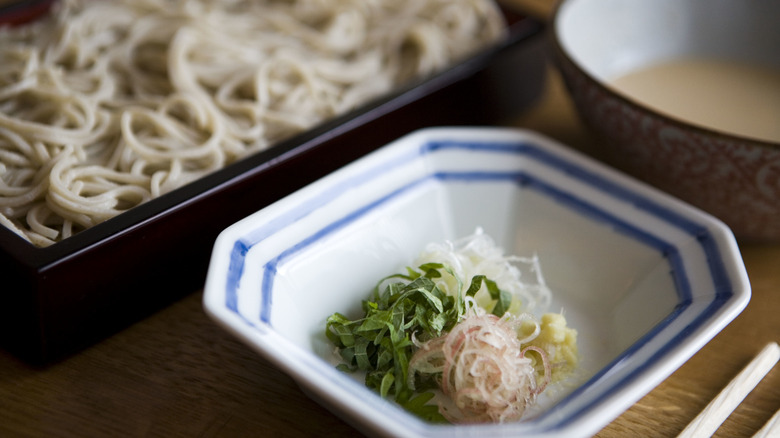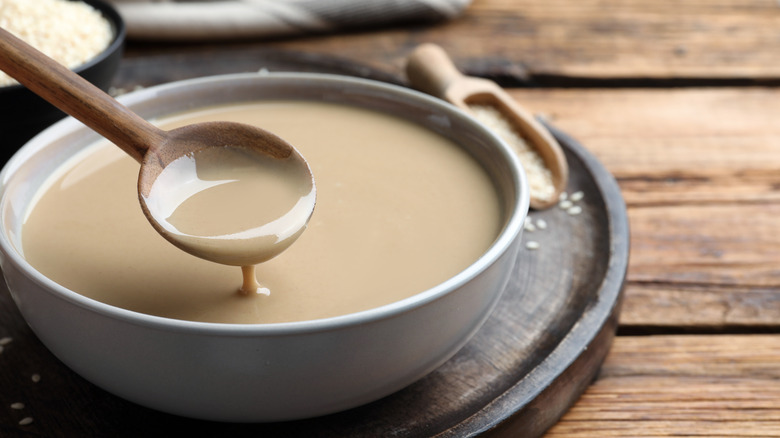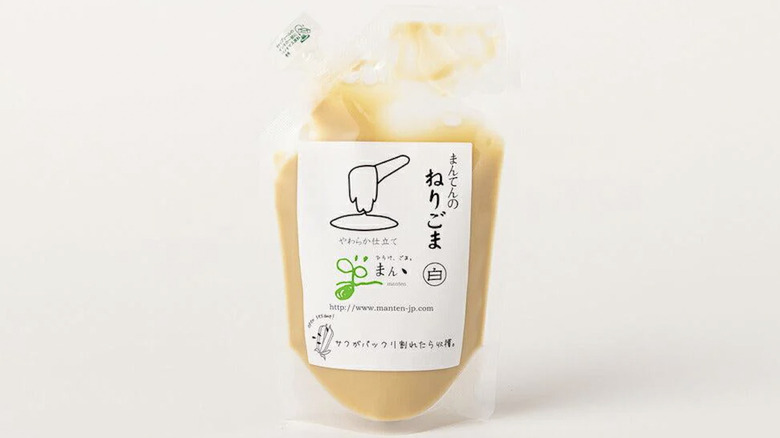Gomadare Is The Creamy Japanese Sauce That Can Upgrade Any Meal
If condiments take up half the real estate in your fridge and you have a thing for sesame, you might already be familiar with gomadare. The popular creamy sesame-based Japanese dipping sauce is often used in shabu-shabu, also known as Japanese hot pot, but its applications only end where your benne seed cravings stop.
You could drizzle it over vegetables, use it to coat Japanese noodles, serve it with any kind of tofu, or use it as a salad dressing. If you put your mind to it, we have no doubt that some of you could eat gomadare with every meal — and you absolutely should.
Gomadare is easy enough to find at any Asian grocery store and even at Walmart, but it's super simple — and definitely worth it — to make it at home. Once you do, you'll want to memorize it and keep it in your back pocket as a do-it-all sauce for almost any dish.
A simple and essential recipe
In Japanese, "goma" means sesame seeds, and "dare" means sauce. Along with benne, the sweet and savory condiment makes use of five essential Japanese ingredients: soy sauce, miso, sugar, salt, and rice vinegar, all of which help to boost that signature umami flavor that defines our "fifth taste." It also works in Japanese sesame paste and dashi to add creaminess, complexity, and — of course — toasted sesame flavor.
A recipe on popular Japanese cooking and culture blog Just One Cookbook is easy enough to memorize for all your future sauce-making needs. "All you need to do is to mix everything," it says. You should begin by mixing the sesame paste and sugar, stirring until the sugar is totally dissolved. From there, you'll want to pour in the soy sauce, the rice vinegar, and the dashi, adding salt to taste. There's no miso required for this one.
Since so few ingredients are required for traditional gomadare, it's important to choose your players wisely.
Choosing your sesame paste
You could certainly use tahini in a pinch, but Just One Cookbook recommends springing for nerigoma, a "rich, creamy, and flavorful" Japanese sesame paste made from ground sesame seeds. Tahini, on the other hand, is made from untoasted sesame seeds, giving it a slightly less nutty flavor and a lighter color.
You can find nerigoma — or Chinese sesame paste, which is also made from toasted seeds — in any Asian grocery store. Just be sure to pick up the white-seed kind if you're using it to make gomadare.
If you're having trouble finding the right kind of toasted sesame paste at the store, you'll be glad to know that it's super simple to make at home. All you need is raw or toasted sesame seeds (give them a quick toast in a skillet, regardless) and a food processor. Grind them for 10 to 15 minutes or until they've transformed into a thick, creamy paste.


